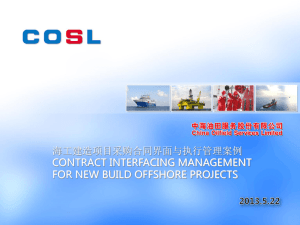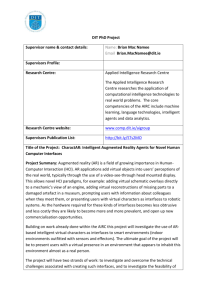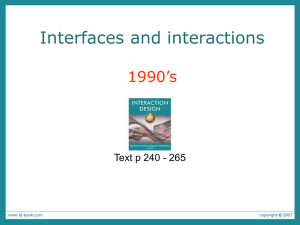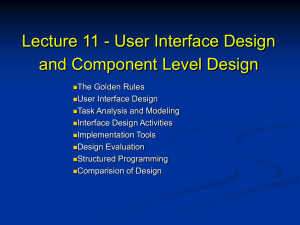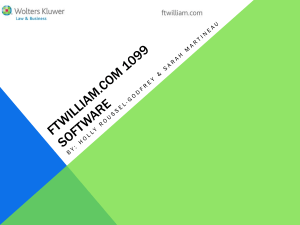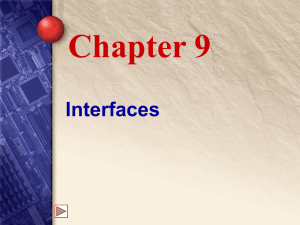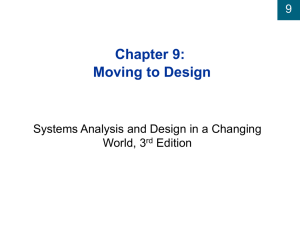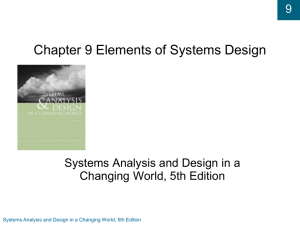Successful interface risk management
advertisement
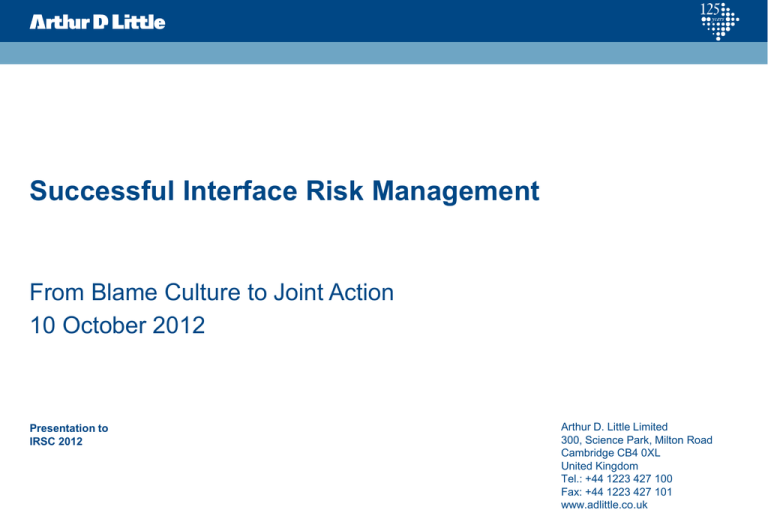
Successful Interface Risk Management From Blame Culture to Joint Action 10 October 2012 Presentation to IRSC 2012 Arthur D. Little Limited 300, Science Park, Milton Road Cambridge CB4 0XL United Kingdom Tel.: +44 1223 427 100 Fax: +44 1223 427 101 www.adlittle.co.uk This presentation sets out Why interfaces are important Why current approaches for risk management at interfaces are insufficient A proposal for an approach to managing non-technical interfaces better Successful Interface Risk Management 2 Introduction – Why interfaces are important Interfaces are important because they are everywhere Successful Interface Risk Management 3 Introduction – Why current approaches are insufficient Current approaches for risk management at interfaces are insufficient as they mainly consider technical aspects MIL Standard 882 NATO RTO report ‘Validation, verification and certification of embedded systems’ CSM on risk evaluation and assessment NASA Risk Management Handbook Successful Interface Risk Management 4 Approach – Overview The aim of the approach is to move from blame culture to joint action to manage risks The emphasis of the approach is on bringing parties together to work jointly to manage the interface risks As a result there is a better understanding and agreement on: 1. What the interface is 2. What the risks at the interface are 3. How big the risks are 4. What actions need to be taken by each party to manage each risk Successful Interface Risk Management 5 Approach – 1. Understanding the interface The first step of the approach is to clearly define and describe the interface between parties Example Engineering meetings interface Coordination meetings interface Planning meetings interface Technical solutions for feature fulfillment Feature fulfillment Software (SW) Business impact Vehicle to Powertrain: Material order from vehicle project of Engine/ transmission deliveries Hardware (HW) V&V plan fulfillment – Uptime – Material deliveries (maturity of the material as one parameter) – Reliability growth rate (Problem solving speed, verification fulfillment) – Changes on Engine side --> leading to changes vehicle side Feature balancing Priority of vehicles in the common plan Vehicle to Powertrain: SW status on the truck to the engine Other interface Define the interface in terms of: Quality & Features (technical aspects) Delivery (timing) Costs (product/project) Managerial (control) SW delivery plan, who is developing the SW? – Right SW in the right time for the right purpose is a key interface. The people working with the planning are stuck in short term firefighting V&V for different engine types Successful Interface Risk Management 6 Approach – 2. Identifying interface risks In the second step a HAZOP style approach based on Guidewords is used to identify interface risks Project/Project Guidewords: Engineering meetings interface What if technical solutions for feature fulfillment are later than intended? Coordination meetings interface What feature balancing is not achieved? Planning meetings interface What if the wrong material is delivered from Vehicle to Powertrain project? Other interface What if material is delivered earlier than intended? Timing Early – it happens earlier than intended Late – it happens later than intended Before – it happens earlier in the sequence than was intended After – it happens later in the sequence than was intended Example Information/material/activity No – none is achieved Partial/less – less is delivered than is required More – more is delivered than is required As well as – something else is delivered, along with what is required Part of – only a part of what is required is delivered Reverse – the logical opposite happens Other than – something completely different happens Successful Interface Risk Management 7 Approach – 3. Assessing interface risks In the third step the identified interface risks are assessed Example Risk level Probability x Severity Probability Highly 5 probable >75% Probable 4 50%-75% 3 Possible 25%-50% 2 Low 5%-25% 1 Very Low 0-5% High Medium Low Very low Low Moderate High Very high 1 2 3 4 5 Severity Successful Interface Risk Management 8 Approach – 4. Taking action to manage interface risks In the fourth step action plans are developed to mitigate the risks Identify Assess Plan mitigation Deliver planned mitigation Review The risk is identified The risk is assessed and its importance known A plan is developed to manage the risk The planned actions are delivered The planned actions reduce the risk Good risk management x “We implemented the action, but it did not work” Result x x “We had a good action plan, but did not do it” x x x “We knew it was important but were too busy” x x x x “We knew about the risk but did nothing” Common stopping point Successful Interface Risk Management 9 Summary This presentation has shown Why interfaces are important Why current approaches for risk management at interfaces are insufficient A proposal for an approach to managing non-technical interfaces better based on: – Parties working jointly on managing interface risks – A HAZOP style approach using Guidewords – A framework for managing the identified risks to make sure they actually reduce risk Successful Interface Risk Management 10


